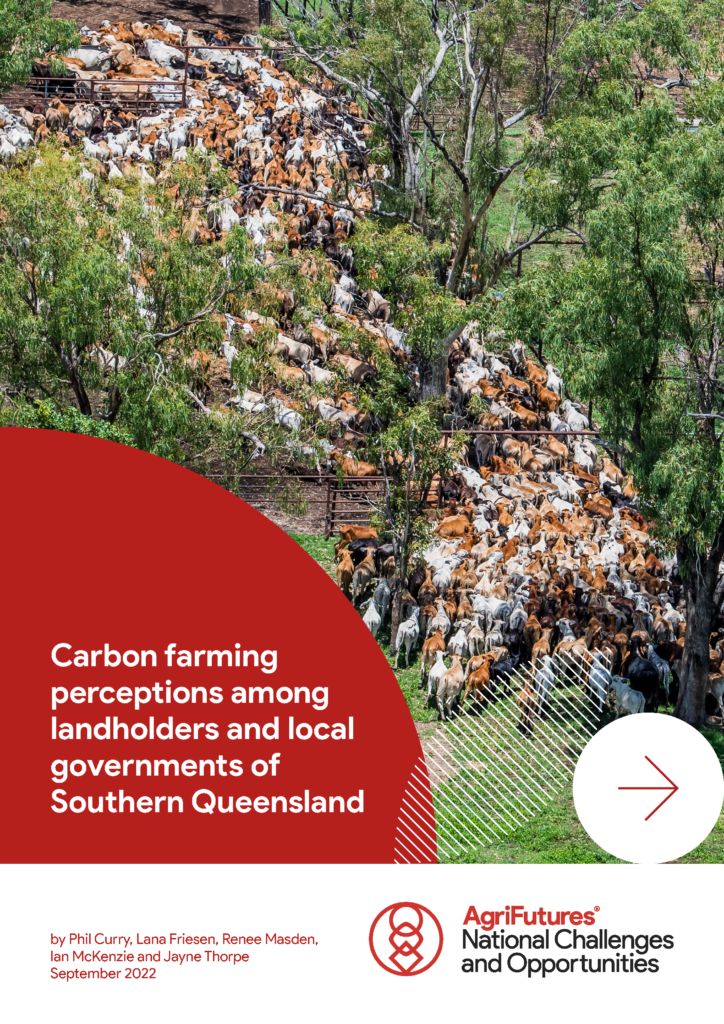Selling carbon credits is a new market in the Southern Queensland region. The Emissions Reduction Fund (ERF) ran its first auction in 2015 and since then there has been rapid expansion in the number of projects focused on agriculture. Most of those projects are categorised as management of soil carbon or management of vegetation. Both these categories aim to sequester carbon in the landscape and thereby generate carbon offset credits (Australian Carbon Credit Units).
Southern Queensland Landscapes, through funding from AgriFutures Australia’s Carbon Initiative, focused on two aspects of the emerging carbon market: (1) qualitative exploration of experiences of carbon farming; and (2) quantitative experimental economic treatments of carbon farming.
Southern Queensland Landscapes spoke with 43 land managers from across Southern Queensland. Most were involved with carbon farming or were looking to become involved. About two-thirds of land managers interviewed indicated farming was their main source of income, and the same proportion had either already signed up to a carbon contract or seemed open to doing so in the future. However, almost all had some negative views of carbon farming, with only half sharing positive views, though many described both positive and negative aspects for their situation.
This sentiment was represented by several themes, including business risk (the landowner bears the majority of risk, carbon is not viewed as a good investment, problems with taxation, land valuation and contractual issues); the trading system being complex and is difficult to understand (re-iterating a lack of basic knowledge); poor communication underpinning the trading system; concerns over the social impacts of carbon projects (lock and leave, weeds, feral animal management); and carbon being a poor fit with current farming systems.
The quantitative evaluation of carbon farming demonstrated strong preferences for cooperative trading with flexible price contracts across all land allocation options and collective threshold variables. This approach was influenced by carbon price and payoffs (where an individual farm may allocate more land to carbon farming if there is a financial return); the level of experience of farmers in a cooperative structure (which would allow land to be allocated to a cooperative aggregation contract, thereby increasing the total value of a carbon projects); and choice and scale of land to be allocated to carbon projects.
The project identified opportunities for agriculture to participate, but there exist considerable barriers to engagement and further national extension programs are required to ensure producers are adequately supported to develop carbon farming opportunities.





